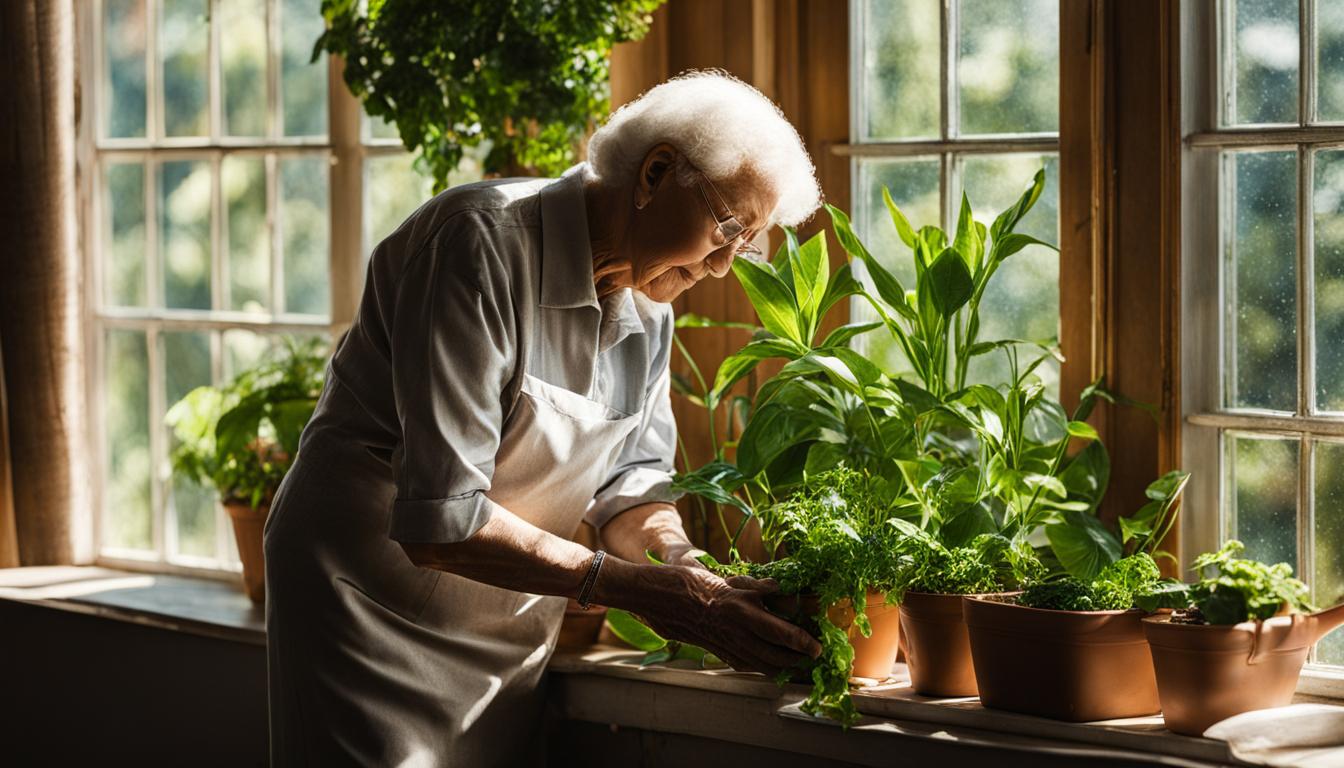
As seniors age, incorporating indoor plants into their living spaces can provide numerous benefits for their well-being and quality of life.
Indoor plants not only add beauty to the home but also offer therapeutic effects, such as reducing stress, improving air quality, and boosting mood. However, it is important to choose plants that are senior-friendly and require minimal care.
In this article, I will share some valuable indoor plant care tips specifically tailored for seniors, including low-maintenance plant options and essential care routines to ensure their plants thrive.
Key Takeaways:
- Indoor plants offer therapeutic benefits for seniors, including reducing stress and boosting mood.
- Choosing the right plants that require minimal care is crucial for seniors.
- Low-maintenance plants like succulents and fragrant plants like lavender are ideal choices for seniors.
- Proper care routines, such as watering, fertilizing, cleaning, and addressing pests, are essential for maintaining the health of indoor plants.
- Seniors living in small spaces or apartments can still enjoy indoor gardening with compact plant varieties.
Health and Mood Benefits of Indoor Plants for Seniors
Indoor plants have been shown to provide significant health and mood benefits for seniors. These plants play a crucial role in improving air quality by recycling carbon dioxide and removing harmful toxins, resulting in better respiratory health.
For seniors who spend a significant amount of time indoors, such as those in assisted living facilities or with limited mobility, the presence of indoor plants can help increase humidity levels and reduce the risk of cold-related illnesses.
The therapeutic effects of indoor plants extend beyond physical health. Research has shown that being in the presence of plants can create a calming and soothing environment, reducing stress levels and promoting positive moods.
This is especially important for seniors who may experience feelings of loneliness or depression. The vibrant colors and natural beauty of indoor plants can provide a sense of connection to nature, fostering a sense of well-being and overall happiness.
The benefits of indoor plants for seniors are not limited to physical health and mood enhancement. Plants have also been proven to improve cognitive function and concentration.
Seniors who engage in indoor gardening activities, such as watering and pruning their plants, can experience a sense of purpose and accomplishment. This can help stimulate mental agility and provide a fulfilling sense of accomplishment, boosting self-esteem and overall cognitive well-being.
By incorporating indoor plants into the living spaces of seniors, caregivers and family members can create a nurturing and holistic environment that promotes health, happiness, and a greater quality of life for their loved ones.
Choosing the Best Indoor Plants for Seniors
When it comes to selecting indoor plants for seniors, it’s essential to choose varieties that are low maintenance and senior-friendly. These plants should be easy to care for and thrive in an indoor environment. Below, I’ve compiled a list of the best indoor plants for seniors that require minimal upkeep:
- Succulents: Succulents like Burro’s Tail, Jade Plant, Aloe Vera, and Snake Plant are excellent choices for seniors. They require infrequent watering and can tolerate dry air, making them low maintenance plants.
- Fragrant Plants: Seniors who enjoy pleasant scents can opt for fragrant plants like Lavender, Basil, and Jasmine. These plants not only add a delightful aroma to the indoor space but also have mood-enhancing properties.
- Boston Fern: Boston Fern is a popular choice for indoor plants due to its air-purifying qualities. It can help improve indoor air quality by removing toxins and adding moisture to the air.
- Peace Lily: Peace Lily is another great indoor plant for seniors. It has beautiful white flowers and can thrive in low light conditions. Additionally, it helps to remove harmful chemicals from the air.
- Ficus: Ficus plants, such as the Fiddle Leaf Fig, are visually appealing and can thrive indoors with proper care. They require moderate light and regular watering.
- English Ivy: English Ivy is a versatile plant that can be grown in hanging baskets or as a trailing plant. It is known for its ability to purify the air and is best suited for bright, indirect light.
By selecting these low maintenance, senior-friendly indoor plants, seniors can enjoy the beauty and therapeutic effects of indoor gardening without the hassle of high maintenance care. These plants not only enhance the aesthetics of the indoor space but also provide health benefits and improve overall well-being.
| Plant | Light Requirements | Watering Needs | Additional Benefits |
|---|---|---|---|
| Succulents | Bright, indirect light | Infrequent watering | Drought-tolerant, air-purifying |
| Fragrant Plants | Bright, indirect light | Regular watering | Mood-enhancing, pleasant aroma |
| Boston Fern | Indirect light | Regular watering | Air-purifying, adds moisture to the air |
| Peace Lily | Low to medium light | Regular watering | Air-purifying, removes harmful chemicals |
| Ficus | Moderate, indirect light | Regular watering | Visually appealing |
| English Ivy | Bright, indirect light | Regular watering | Air-purifying, versatile |
Keep in mind that different plants have specific care requirements, so it’s important to familiarize yourself with each plant’s needs. By choosing the right plants and providing them with the necessary care, seniors can enjoy the benefits of indoor gardening and create a green oasis in their living spaces.
Tips for Caring for Indoor Plants for Seniors
Caring for indoor plants is an essential aspect of maintaining their health and longevity, especially for seniors. With a few simple tips and tricks, seniors can ensure that their indoor plants thrive and bring beauty and joy to their living spaces.
Firstly, watering is a crucial part of plant care. Seniors should water their plants on an as-needed basis, ensuring that the top inch of soil is dry before watering again. Overwatering should be avoided as it can lead to root rot and other issues. It’s also important to water the plants thoroughly, allowing excess water to drain from the bottom of the containers.
In addition to watering, regular fertilizing is necessary for the optimal growth of indoor plants. Seniors should follow the instructions on the plant fertilizer label and apply it during the spring and summer months when plants are actively growing. This will provide the necessary nutrients for healthy foliage and vibrant blooms.
Furthermore, maintaining the cleanliness of the plants is essential. Seniors should regularly clean the leaves of their indoor plants to remove dust and debris. This can be done by gently wiping the leaves with a damp cloth or using a soft brush. Occasional pruning is also recommended to enhance the appearance of the plants and prevent overgrowth.
| Tips for Caring for Indoor Plants for Seniors |
|---|
| Water plants on an as-needed basis, ensuring the top inch of soil is dry. |
| Avoid overwatering to prevent root rot and other issues. |
| Fertilize plants during spring and summer months for optimal growth. |
| Regularly clean the leaves to remove dust and debris. |
| Occasionally prune to enhance appearance and prevent overgrowth. |
Best Containers for Indoor Plants

Choosing the right containers for indoor plants is essential for their growth and overall health. The type of container you select should depend on the size and species of the plants you wish to grow. Here are some options to consider:
- Terra cotta pots: These traditional clay pots are porous and allow for good airflow to the roots. They are available in various sizes and shapes, making them suitable for a wide range of indoor plants.
- Plastic pots: Lightweight and durable, plastic pots are a popular choice for indoor gardening. They come in different colors and designs, allowing you to match them with your home decor.
- Hanging baskets: Ideal for trailing plants like ferns and devil’s ivy, hanging baskets add an aesthetic touch to indoor spaces. They are suspended from the ceiling or mounted on walls, saving floor space.
- Self-watering containers: These innovative containers have a reservoir that automatically provides water to the plants, reducing the frequency of watering. They are especially beneficial for seniors who may have difficulty with regular watering.
Remember to choose containers with proper drainage holes to prevent waterlogging and root rot. You can place saucers under the pots to collect excess water and protect your surfaces. Additionally, consider the color and design of the pots to enhance the overall aesthetic appeal of your indoor plants.
Table: Comparison of Container Types
| Container Type | Advantages | Disadvantages |
|---|---|---|
| Terra cotta pots | Good airflow to roots, aesthetically pleasing | Can be heavy, may break if dropped |
| Plastic pots | Lightweight, durable, available in various designs | May not provide as much airflow to roots |
| Hanging baskets | Saves space, adds decorative element | Requires proper installation, limited size options |
| Self-watering containers | Reduces watering frequency, ideal for busy individuals | May be more expensive than other options |
Each type of container has its own set of advantages and disadvantages, so choose the one that best suits your needs and the needs of your indoor plants. With the right containers, you can create a beautiful and thriving indoor garden.
Transplanting and Repotting Indoor Plants
Transplanting and repotting indoor plants is an important aspect of their care, especially when they outgrow their current containers. This process allows the plants to have sufficient space for root growth and ensures their overall health and vitality. When it comes to transplanting, I follow a few simple steps to ensure a successful transition for my indoor plants.
Gently Remove the Plant from its Pot
To begin the transplanting process, I carefully remove the plant from its current pot. I gently loosen the soil around the edges using my fingers or a small garden tool, being careful not to damage the roots.
By turning the pot partially upside down and gently squeezing the sides, I can coax the plant out without causing harm. It’s essential to handle the plant with care during this step to prevent any unnecessary stress or damage.
Choose the Right Pot and Fresh Potting Soil
After removing the plant from its pot, I select a new container that is slightly larger than the previous one. This allows room for the plant’s roots to grow and spread comfortably. It’s important to ensure that the new pot has drainage holes to prevent waterlogged soil, which can lead to root rot.
Once the new pot is selected, I fill it with fresh potting soil. High-quality potting soil is essential for providing the necessary nutrients and a well-draining environment for the plant.
Replant and Water Thoroughly
With the new pot and fresh soil ready, I carefully place the plant into the new container, making sure it is positioned at the same height as before. Then, I gently fill the remaining space with additional potting soil, ensuring that there are no air pockets around the roots.
After repotting, I give the plant a thorough watering to settle the soil and hydrate the roots. This step helps the plant establish itself in its new home and promotes healthy growth.
Transplanting and repotting indoor plants can help them thrive and continue to beautify our indoor spaces. By following these steps and providing the right care, we can ensure that our indoor plants have the best chance of thriving and bringing joy to our lives.
Tips for Watering Indoor Plants
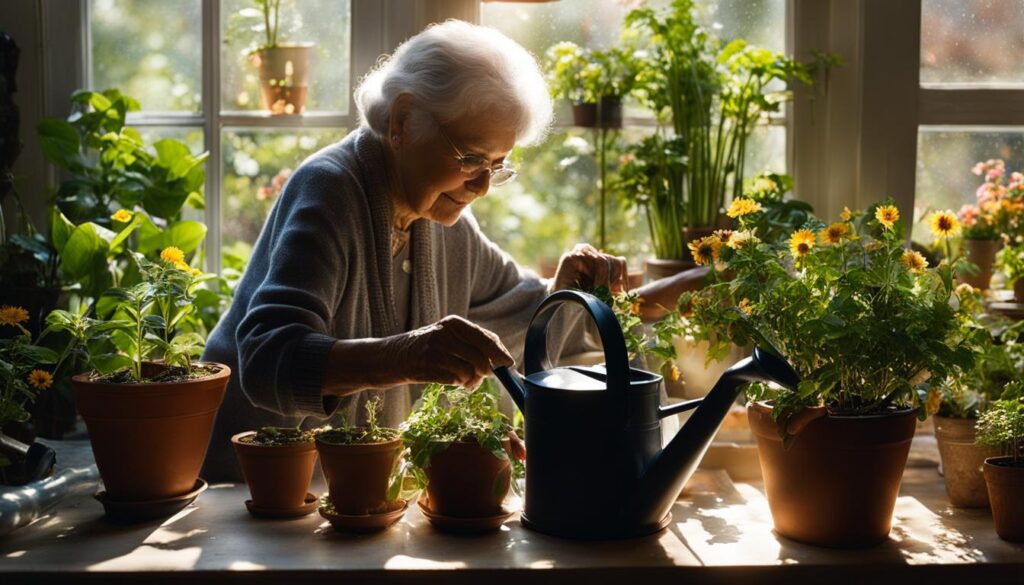
Proper watering is essential for the health and vitality of indoor plants. Knowing when and how much to water can make a significant difference in their overall well-being. Here are some valuable tips to help you master the art of watering indoor plants:
- Observe the plant’s moisture level: Check the top inch of soil with your finger before watering. If it feels dry to the touch, it’s time to water the plant.
- Water thoroughly: When watering, make sure to moisten the entire root ball. Water until you see it coming out of the drainage holes at the bottom of the pot.
- Avoid overwatering: Overwatering can lead to root rot and other issues. Allow the soil to dry out slightly between waterings, especially for plants that prefer well-drained soil.
- Consider the plant’s needs: Different plants have different watering requirements. Research the specific needs of your indoor plants to ensure they receive the appropriate amount of water.
Signs of under or overwatering:
It’s important to pay attention to your plants and look for signs of under or overwatering. Here are some common indicators:
- Underwatering: Leaves turning yellow, wilting, or becoming crispy are signs of underwatering. Adjust your watering schedule accordingly.
- Overwatering: Yellowing leaves, root rot, or a foul smell coming from the soil are indications of overwatering. Reduce watering frequency and make sure the pots have proper drainage.
Remember, every plant is unique, so it may take some trial and error to find the perfect watering routine. By observing your plants closely and adjusting accordingly, you can ensure they thrive and flourish in your indoor space.
Indoor Plant Care During Travel
Traveling can pose a challenge when it comes to caring for indoor plants, but with proper preparation, you can ensure that your plants thrive while you’re away. Here are some tips for caring for your indoor plants during your time away:
1. Watering
Before leaving, make sure to thoroughly water your plants to ensure they have enough moisture. You can also create a self-watering system by using a wick or placing pots in trays with water-absorbing gel crystals. This will help provide a continuous water supply for your plants while you’re gone.
2. Light
Consider the lighting needs of your plants and place them in an area where they will receive adequate light. If natural light is limited, you can use timers to simulate daylight by setting up grow lights to ensure your plants get the light they need.
3. Plant Sitters
If possible, ask a friend, family member, or neighbor to check on your plants periodically. Provide clear instructions on watering frequency and any specific care requirements for each plant. Alternatively, consider joining a plant-sitting community where fellow plant enthusiasts can help care for your indoor garden.
By following these tips, you can enjoy your travels knowing that your indoor plants are being well taken care of. Remember to plan ahead and provide the necessary care instructions to ensure the health and longevity of your beloved indoor plants.
Troubleshooting Common Issues with Indoor Plants
While indoor plants offer numerous benefits, they can sometimes encounter common issues that can affect their health and appearance. It’s important for seniors to be aware of these issues and know how to troubleshoot them effectively. Here are a few common problems that may arise with indoor plants and some tips on how to address them:
Pest Infestations
One of the most common problems with indoor plants is pest infestations. Insects like aphids, spider mites, scale, and mealybugs can feed on the leaves and stems of plants, causing damage and affecting their overall health. To combat these pests, you can use insecticidal soap or water sprays.
Soft-bodied pests like aphids and spider mites can be controlled by spraying a mixture of water and mild liquid soap directly on the affected areas.
For pests with waxy coatings like scale and mealybugs, rubbing alcohol can be effective. Regular inspection and prompt action can help prevent and control pest infestations.
Fungus Gnats
Fungus gnats are tiny black flies commonly found around indoor plants. Their larvae feed on the roots of plants, causing harm and affecting their growth. To control fungus gnats, allow the soil surface to dry between waterings, as they thrive in moist conditions.
Additionally, yellow sticky traps can be used to catch adult gnats and reduce their population. Maintaining proper watering practices and keeping the soil surface dry can help prevent fungus gnat infestations in indoor plants.
Addressing Diseases
Indoor plants can also be susceptible to diseases, which can lead to wilting, yellowing leaves, and overall decline in health. If you notice signs of disease, such as spots, molds, or unusual growth, it’s important to take action to prevent the spread.
Remove any infected plants or affected leaves and stems, and destroy them to prevent further contamination. Disinfecting tools and containers before using them again can also help prevent the spread of diseases.
Proper care, including maintaining good air circulation and avoiding overwatering, can help keep indoor plants healthy and reduce the risk of diseases.
| Issue | Solution |
|---|---|
| Pest Infestations | Use insecticidal soap or water sprays to control pests. Regularly inspect plants and take prompt action. |
| Fungus Gnats | Allow soil surface to dry between waterings. Use yellow sticky traps to catch adult gnats. |
| Addressing Diseases | Remove infected plants or affected plant parts. Disinfect tools and containers. Maintain good air circulation and avoid overwatering. |
Indoor Plants for Small Spaces and Apartments
Living in small spaces or apartments doesn’t mean you can’t enjoy the benefits of indoor plants. There are plenty of plant options that are perfect for compact living areas, requiring minimal space and maintenance.
Whether you have limited floor space or want to add some greenery to your windowsill, these apartment-friendly indoor plants are sure to thrive in your home.
1. Snake Plant (Sansevieria): With its tall, upright leaves, the snake plant is an excellent choice for small spaces. It can adapt to different light conditions and doesn’t require frequent watering, making it ideal for busy seniors.
2. Devil’s Ivy (Epipremnum aureum): This fast-growing vine is perfect for hanging baskets or ledge planters. It can tolerate low light levels and adds a touch of elegance with its cascading foliage.
3. Jade Plant (Crassula ovata): Known for its thick, fleshy leaves, the jade plant is a resilient succulent that thrives in bright light. It requires minimal watering and can add a touch of nature to any small space.
4. Button Fern (Pellaea rotundifolia): If you’re looking for a compact fern to add some lush greenery to your apartment, the button fern is your best bet. It prefers bright, indirect light and moderate humidity.
5. Spider Plant (Chlorophytum comosum): The spider plant is a classic choice for indoor gardening. It has long, arching leaves with white stripes and produces small, offshoot plants that can be propagated easily.
These apartment-friendly indoor plants not only bring a touch of nature into your small space but also offer numerous health benefits.
They can help purify the air, reduce stress, and create a calming atmosphere. With a little care and attention, you can enjoy the beauty and therapeutic effects of indoor plants, even in the smallest of living spaces.
Creating a Plant Care Schedule for Seniors
Developing a plant care schedule is essential for seniors who want to ensure the health and beauty of their indoor plants. By creating a routine, they can stay organized and provide the necessary care each plant requires.
A plant care schedule should include watering frequency, fertilizing periods, cleaning routines, and regular inspections for pests or diseases. By following a consistent schedule, seniors can effectively maintain their indoor plants and enjoy their benefits for years to come.
When creating a plant care schedule, it’s important to consider the specific needs and requirements of each plant. Some plants may require more frequent watering, while others may need less.
Researching the care instructions for each plant and taking note of their individual needs will help seniors create an effective schedule. It’s also helpful to include reminders or notifications to ensure that tasks are not forgotten.
Watering frequency is one of the most crucial aspects of plant care. Seniors should determine how often each plant needs to be watered based on the species, size of the pot, and environmental conditions.
It’s important to avoid overwatering, as it can lead to root rot and other issues. Seniors should also consider using a moisture meter to accurately measure the moisture level of the soil and determine when watering is necessary.
| Plant | Watering Frequency | Fertilizing Period | Cleaning Routine | Pest and Disease Inspection |
|---|---|---|---|---|
| Succulents | Every 2-4 weeks | Every 2-4 months | Wipe leaves with damp cloth every 2-3 weeks | Inspect for pests every month |
| Lavender | Every 7-10 days | Every 4-6 weeks | Trim dead flowers and leaves regularly | Inspect for pests every month |
| Peace Lily | Every 7-10 days | Every 4-6 weeks | Wipe leaves with damp cloth every month | Inspect for pests every month |
| Snake Plant | Every 2-4 weeks | Every 2-4 months | Wipe leaves with damp cloth every 2-3 weeks | Inspect for pests every month |
Fertilizing is another important aspect of plant care. Seniors should follow the recommended fertilizing period for each plant, usually during the spring and summer months when plants are actively growing.
Using a diluted, balanced fertilizer will provide the necessary nutrients for healthy plant growth. It’s important to carefully follow the instructions on the fertilizer label to avoid over-fertilizing, which can be harmful to the plants.
Cleaning routines for indoor plants involve removing dust from leaves regularly to ensure proper photosynthesis and prevent pests from taking hold.
Seniors can use a damp cloth or a gentle spray of water to wipe the leaves and keep them clean. It’s recommended to clean the leaves every 2-3 weeks or as needed.
Regular inspections for pests and diseases are crucial for maintaining the health of indoor plants. Seniors should examine the leaves, stems, and soil for any signs of pests such as aphids, spider mites, or fungus gnats.
If pests are detected, appropriate measures should be taken immediately to prevent the infestation from spreading and causing damage to the plants.
By following a well-designed plant care schedule, seniors can enjoy the beauty and therapeutic effects of their indoor plants while ensuring their long-term health and vitality.
Conclusion and Final Tips for Indoor Plant Care for Seniors
Caring for indoor plants can be a rewarding and fulfilling hobby for seniors. Not only do indoor plants offer numerous health benefits, but they also bring beauty and a sense of calm to any living space.
By following a few simple tips and techniques, seniors can ensure the well-being of their indoor plants and enjoy their therapeutic effects for years to come.
First and foremost, it is essential to choose the right plants for indoor living. Opt for low-maintenance varieties that require minimal care, such as succulents or fragrant plants.
This will make it easier for seniors to incorporate indoor gardening into their daily routine without feeling overwhelmed.
Proper watering is crucial for the health of indoor plants. Seniors should water their plants as needed, allowing the top layer of soil to dry before watering again.
Overwatering should be avoided, as it can lead to root rot and other issues. Additionally, regular cleaning of plant leaves and occasional pruning to prevent overgrowth are important tasks to maintain the appearance and overall health of indoor plants.
Lastly, addressing any issues promptly is vital for the well-being of indoor plants. Whether it’s pests, diseases, or the need for repotting, seniors should take action as soon as a problem arises. By staying proactive and vigilant, they can ensure that their indoor plants remain healthy and thriving.
FAQ
What are some indoor plant care tips for seniors?
Seniors should choose low-maintenance plants that require minimal care, water their plants as needed, fertilize during the spring and summer months, regularly clean the leaves, and address pests or diseases promptly.
What are the health and mood benefits of indoor plants for seniors?
Indoor plants can improve air quality, reduce stress, boost mood, purify the air, and reduce the risk of respiratory problems for seniors.
How do I choose the best indoor plants for seniors?
Seniors should choose low maintenance plants like succulents or fragrant plants like lavender, basil, or jasmine. Plants like Boston fern, peace lily, ficus, and English ivy offer health benefits by purifying the air.
What are some tips for caring for indoor plants for seniors?
Seniors should water their plants as needed, avoid overwatering, fertilize during the spring and summer months, clean plant leaves regularly, prune when necessary, and promptly address pests or diseases.
What are the best containers for indoor plants?
Containers should be chosen based on the size and species of the plants. Hanging baskets are suitable for hanging plants like ferns and devil’s ivy. Containers should have drainage holes to prevent waterlogging and can be paired with saucers to collect excess water.
How do I transplant and repot indoor plants?
When repotting, gently coax the plant out of the pot by turning it partially upside down and squeezing the sides. Use fresh potting soil and water thoroughly after repotting. This is typically done during the spring and summer months.
What are some tips for watering indoor plants?
Seniors should water their plants as needed, ensuring the top layer of soil is dry before watering again. Overwatering should be avoided, and watering frequency may vary depending on the plant species and environmental conditions.
How can I care for indoor plants during travel?
Seniors can enlist the help of a friend, family member, or senior living community staff to water and care for their plants. Self-watering systems or water-absorbing gel crystals can also be used to maintain plant hydration during travel.
What should I do if my indoor plants encounter issues?
Soft-bodied pests can be combated with insecticidal soap or water sprays, while rubbing alcohol can be effective against pests with waxy coatings. Fungus gnats can be controlled by allowing the soil surface to dry between waterings. Infected plants or affected leaves and stems should be removed and destroyed to prevent disease spread.
What are some indoor plants suitable for small spaces and apartments?
Snake plant, devil’s ivy, jade plant, button fern, and spider plant are well-suited for compact living spaces and can thrive in various conditions, including low light environments.
How do I create a plant care schedule for seniors?
Seniors should establish a schedule that includes watering frequency, fertilizing periods, cleaning routines, and regular inspections for pests or diseases. Following a consistent plant care routine can help maintain the health and beauty of indoor plants.
Any final tips for indoor plant care for seniors?
Seniors should persevere and experiment with different plants, follow care instructions carefully, and seek assistance when needed. With proper care, indoor plants can provide beauty and therapeutic effects for years to come.

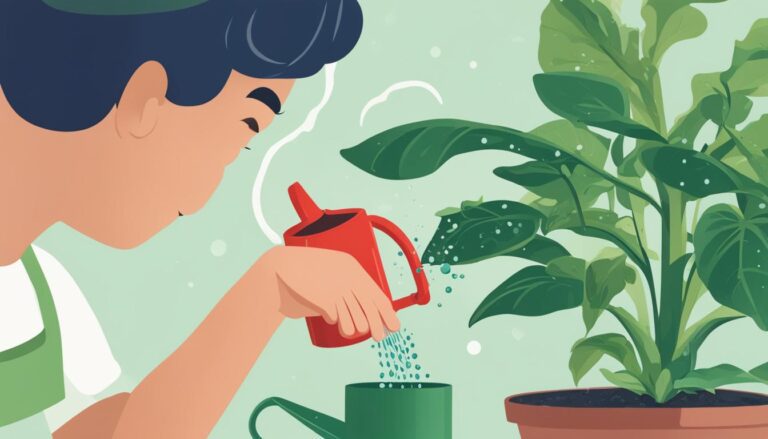


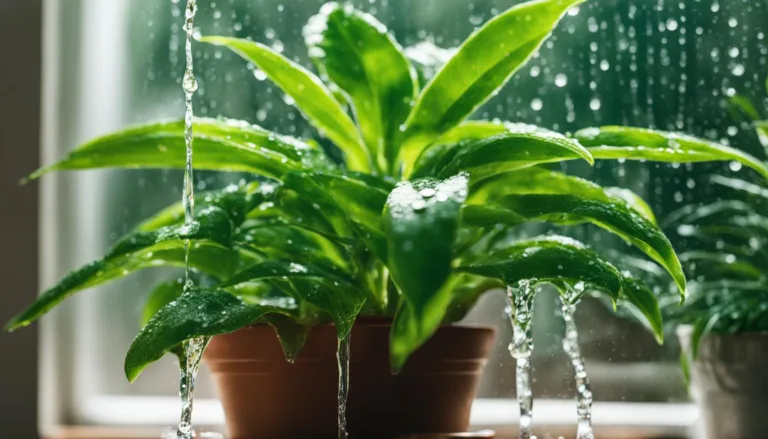
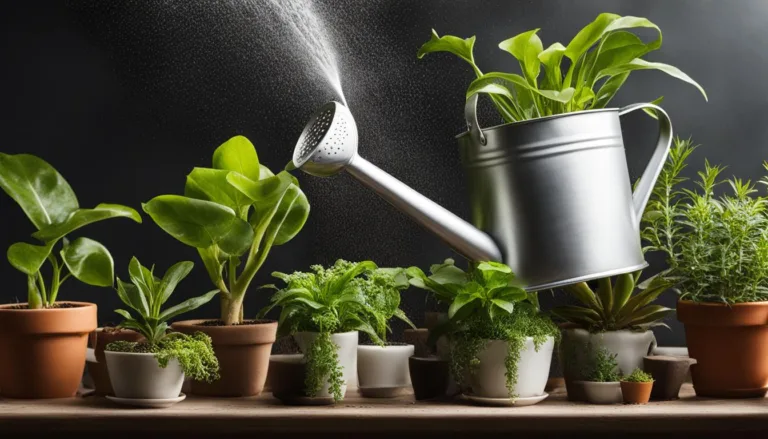
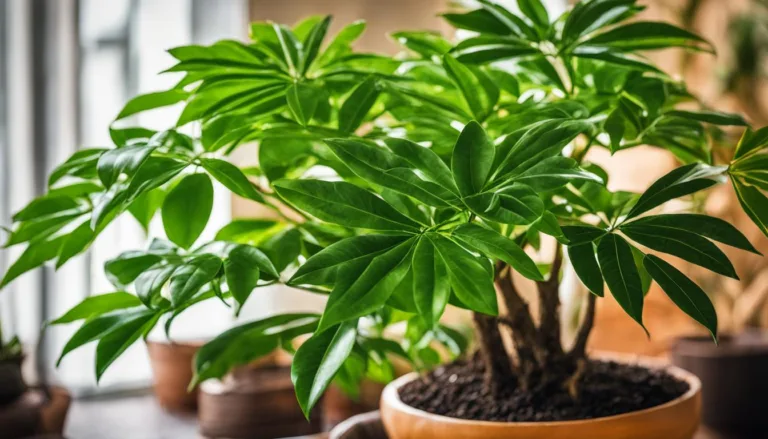
2 Comments
Comments are closed.